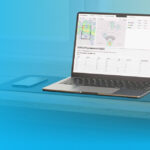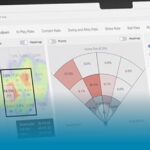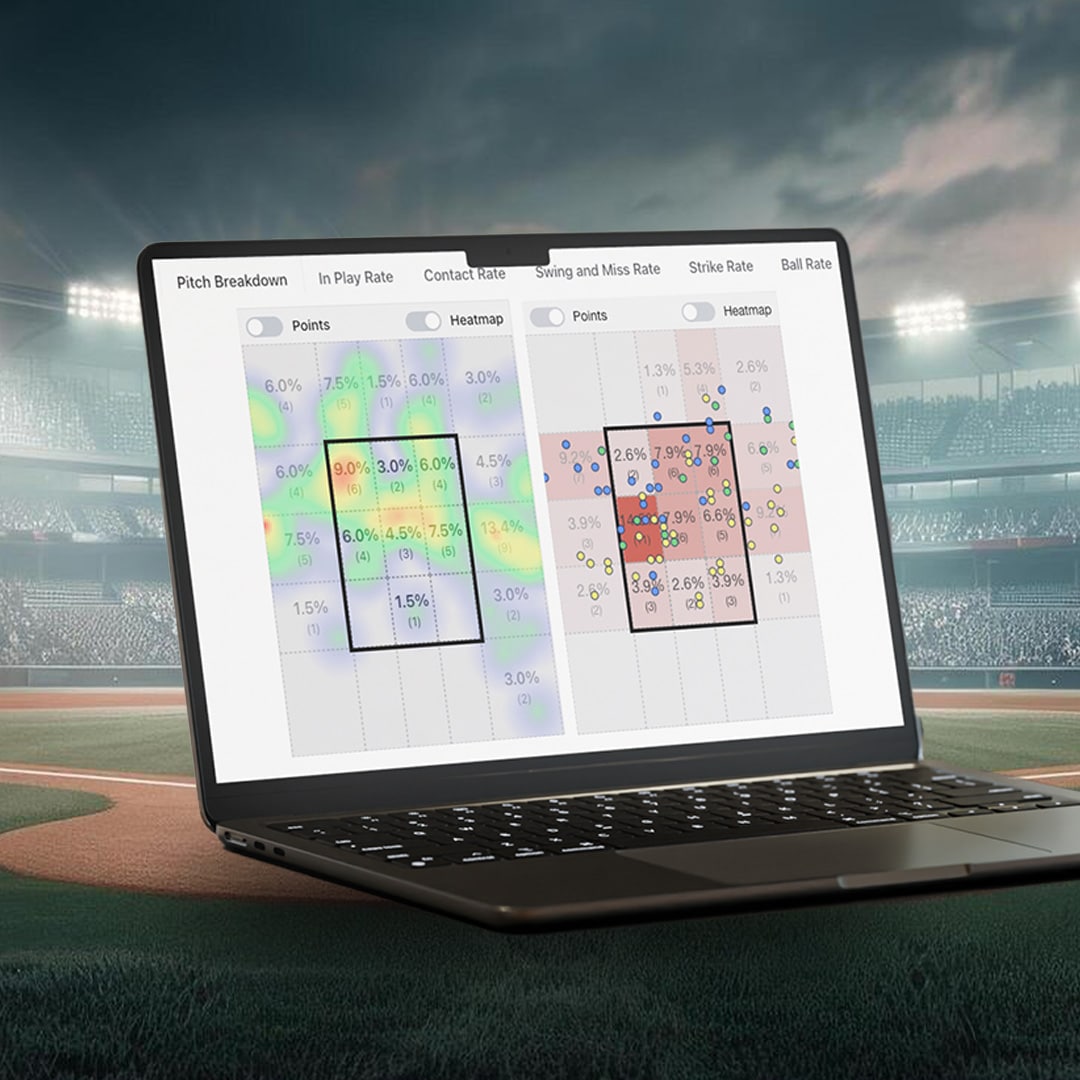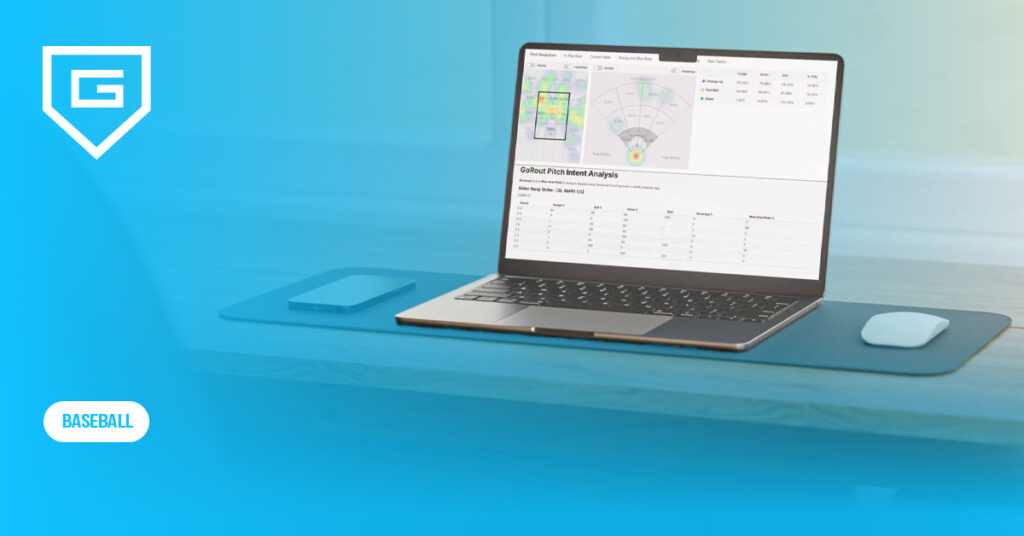College Baseball Analytics: The Complete Guide to Smarter Coaching
Reading Time: 9 minutes
Reading Time: 9 minutes
College baseball analytics lets you make smarter, quicker coaching calls based on real data instead of just gut feelings.
By seeing how analytics reveal player performance, game trends, and hidden opportunities, you can build a tougher, more competitive team.
This guide digs into using data to improve everything from player development to in-game tactics.
You’ll see how analytics have grown from simple stats to advanced tech solutions that track how every play shifts run expectancy.
You’ll explore metrics, get tips on choosing the right analytics partner, and see how data-driven coaching could shape the future of college baseball.
The Basics of College Baseball Analytics

Analytics takes raw baseball data and turns it into clear insights to guide better coaching decisions. You see measurable trends that help you understand player performance, game strategy, and team efficiency.
This way, you can make decisions based on facts instead of guessing. Analytics matter because they catch what traditional stats miss.
A player’s batting average might look good, but advanced metrics like RE24 (Run Expectancy based on 24 base-out states) show how each action affects the odds of scoring runs. It gives you a fuller picture of a player’s real impact.
Modern college programs have tools that track every pitch, swing and defensive play. These systems collect data in real time so you can adjust lineups, pitching rotations and training sessions with precision.
The more data you collect, the better you can predict outcomes and avoid mistakes.
Analytics improves:
- Recruiting: Find undervalued players using performance trends.
- Game strategy: Optimize batting orders and pitching matchups.
- Player development: Track progress and fine-tune training plans.
- Injury prevention: Monitor workload and recovery patterns.
Analytics creates a culture of accountability and growth. You and your players can measure success by how every play helps the team get to its goals.
The Evolution Of Analytics In College Baseball
College baseball has moved from basic stat sheets to advanced data systems that guide every pitch, swing, and roster move. Analytics now shape how coaches train players, scout opponents, and plan rosters across the NCAA.
Coaches used to rely on batting averages and earned run averages. The rise of sabermetrics changed that by using deeper performance data to measure player value. What once lived in spreadsheets now drives real-time coaching decisions powered by sensors and cameras.
Pro baseball led the way. As Major League Baseball brought in systems like TrackMan and Rapsodo, college programs followed. Schools such as Cal Poly installed multi-camera motion capture systems, measuring pitch spin, swing paths and biomechanics.
Technology now fuels smarter coaching. High-speed cameras, motion trackers, and predictive models give instant feedback on player health and performance.
Many programs use these insights to design workouts, prevent injuries, and make data-backed roster choices.
Modern data systems help you connect instinct with evidence. Learning how to use analytics in baseball can give your team a real edge in both player development and game strategy.
Core Concepts Every Coach And Player Should Know

Analytics gives you a clear picture of what’s really happening on the field and helps you make better choices about players, training, and game strategy.
Sabermetrics and advanced metrics measure player value beyond basic stats. Metrics like On-base Plus Slugging (OPS), Wins Above Replacement (WAR), and Fielding Independent Pitching (FIP) show how much a player truly brings to the team.
| Concept | What It Measures | Why It Matters |
| OPS | On-base + Slugging | Shows total offensive value |
| WAR | Overall contribution | Compares players across positions |
| FIP | Pitcher skill level | Removes defensive bias |
| BABIP | Luck vs. skill | Reveals hitting consistency |
These numbers help you move from opinion-based coaching to fact-based decisions.
Key performance indicators (KPIs) track progress for hitters, pitchers, and fielders. Hitters might focus on contact rate and exit velocity. Pitchers can look at spin rate, strikeout-to-walk ratio, and pitch location. Fielders measure range factor and defensive runs saved.
Using baseball data analysis tools makes it easier to collect and interpret this info.
Balancing traditional scouting with analytics keeps your coaching grounded. Data shows trends and probabilities, but scouting picks up attitude, discipline, and teamwork—qualities numbers can’t always capture.
The best coaches combine both, using analytics to confirm what they see and scouting to add human insight.
Tools And Technologies Powering College Baseball Analytics
The right tools turn raw data into smarter coaching decisions. Modern college programs use connected systems that track every pitch, swing, and movement to boost player performance and strategy.
Common data collection methods
You can capture precise player data with high-speed cameras, radar sensors, and wearable trackers.
Modern multi-camera systems capture every angle of the game, giving you synchronized video and performance metrics in real time.
Wearables measure swing speed, heart rate, and workload, helping you manage fatigue and prevent injuries.
Advanced tracking tools collect pitch velocity, spin rate, and launch angle to sharpen both pitching and hitting.
Software for analysis and reporting
Once you collect the data, you need a central platform to process and visualize results.
Analytics dashboards pull together thousands of data points into clear visuals that help you spot trends and adjust strategy fast.
AI-driven tools, like those described in AI in baseball, let you predict outcomes and optimize training sessions.
You can also use baseball analytics tools to automate reports and compare player performance over time.
Integrated baseball scoring software makes stat tracking simple and keeps records accurate during games, giving you instant feedback for in-game decisions.
How To Choose The Right College Baseball Analytics Partner

Choosing the right analytics partner starts with knowing your program’s goals. Figure out if you need help with player development, recruiting, or in-game strategy.
Clear goals make it easier to compare software and services that fit your team’s size, budget, and competition level.
Key criteria to consider:
| Factor | Why It Matters |
| Ease of use | Coaches and players should access data quickly without extra training. |
| Integration | Works smoothly with tools such as TrackMan, Rapsodo, and wearable sensors. |
| Customization | Lets you tailor dashboards and reports to your team’s priorities. |
| Cost | Balances features with your program’s financial limits. |
When testing software, look for platforms that combine real-time data capture with clear visual reports.
Tools such as baseball coaching software can help streamline communication between staff and players while tracking performance trends.
Ask potential partners for live demos or trial access before signing a contract. It helps you see how well their system fits your workflow.
Strong customer support is also important. Go with vendors that offer quick responses, training sessions, and regular updates. Reliable support keeps your data accurate and your staff confident using it.
Check references from other college programs. Their experiences show how well the provider adapts to real-world team needs and how much value they deliver season after season.
Why Use GoRout Connect For College Baseball Analytics
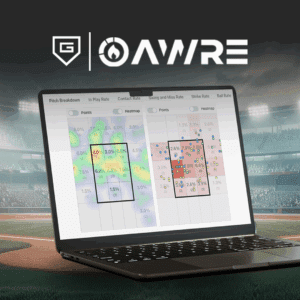
GoRout Connect makes data tracking and decision-making easier during games and practices.
It combines your pitch calls, player performance data, and scouting notes into one system, so you get real-time insights without extra steps or complicated tools.
You use it on a tablet or smartwatch-style device that syncs instantly with your team’s data. Every pitch, swing and result updates automatically so you can coach instead of manual charting.
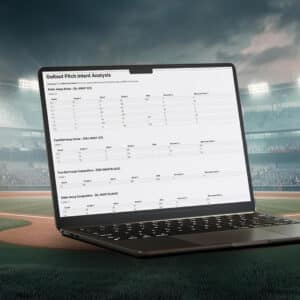
Key features:
- Automatic pitch tracking and spray charts for instant feedback
- Strike zone maps that show hot and cold zones for each hitter
- Pitch intent vs result reports to measure execution
- Instant syncing between devices for in-game adjustments
These help you make better decisions faster. You can see what pitches work, where hitters make contact and how player performance changes over time.

Benefits for college teams:
| Feature | What It Does | Why It Matters |
| Real-time data | Updates instantly after each play | Saves time and reduces errors |
| Easy integration | Works with existing team workflows | No need to change your setup |
| Player development | Tracks trends and consistency | Supports smarter training plans |
| Data accuracy | Uses synced sensors and video | Improves reliability of stats |
If you want to bring pro-level analytics to your college program, you can get a quote and see how it fits your team’s goals.
Applying Analytics To Improve College Baseball Team Performance
With the right tools, you can turn raw numbers into insights that guide training, strategy, and roster choices. It expands beyond collecting stats.
Key benefits of applying analytics:
- Spot strengths and weaknesses fast
- Track player progress over time
- Adjust lineups based on trends
- Improve communication between coaches and players
Modern tools for baseball performance analysis help you collect and visualize data in real time. You can see how game context, opponent strength, and player fatigue all affect results.
| Focus Area | Data Insight | Coaching Impact |
| Hitting | Contact rate, launch angle | Adjust swing mechanics |
| Pitching | Spin rate, location accuracy | Refine pitch selection |
| Fielding | Reaction time, range | Improve defensive positioning |
| Conditioning | Speed, workload | Prevent fatigue and injuries |
Every stat is a new chance to make a better call or help a player get better. Analytics, when used well, can change the game for a college baseball team.
Building A Career In Baseball Analytics For College Teams
If you love baseball and numbers you can actually turn that into a career. Colleges now rely on analytics for everything from recruiting to game strategy.
Teams invest in systems so they need analysts who can turn data into something coaches actually use. It’s a growing field and there’s room for people who get both the sport and the math.
Education and skills you’ll need
Get a degree in statistics, data science, computer science, or sports management. Learn Python, SQL, and R. Practice building models that predict how players will perform.
Strong communication skills matter just as much. You’ll need to explain complex information in plain English to coaches and players who don’t want a math lecture.
Where you can work
College programs, pro teams, and sports tech companies all hire analysts. A lot of entry-level jobs pop up in college baseball departments focused on scouting and player development.
| Career Path | Typical Role | Common Employers |
| College Programs | Data or Video Analyst | NCAA schools, athletic departments |
| Professional Teams | Baseball Operations Analyst | MLB organizations |
| Sports Tech | Product or Data Specialist | Tracking and analytics firms |
| Research & Education | Instructor or Consultant | Universities, research labs |
Certifications from groups like SABR can boost your resume. With each project, you’ll get better at blending data with baseball instincts, which is something every modern team wants.
Future Trends in College Baseball Analytics

Analytics in college baseball is changing fast, especially with new tech coming in. Teams that jump on these tools early usually get an edge in player development and game planning.
AI and machine learning now predict player performance with surprising accuracy. These systems crunch pitch velocity, swing paths, and reaction times to forecast what might happen next.
You can use these insights to tweak lineups or pitching rotations on the fly. It’s changing how coaches think about in-game decisions.
New biomechanics and health monitoring tools track movement, workload, and recovery. Wearable sensors and motion-capture cameras can spot early signs of fatigue or injury risk.
This data helps coaches customize training loads and keep players healthier over a long season. It’s not just for the pros anymore.
Real-time communication tech, like AI-powered video systems and cloud dashboards, is changing how you coach. Coaches and analysts can share live data during games, tweaking plans as things unfold.
As these systems get cheaper, even smaller programs can use tools that used to be just for pro teams. College baseball is going to be more connected and data-driven than ever.
Conclusion About College Baseball Analytics
You’ve seen how data now drives smarter coaching in college baseball. From pitch tracking to player health monitoring, analytics gives you measurable ways to improve performance and decision-making. Programs that use these insights gain a clear edge in training, recruiting, and game strategy.
Key benefits you can apply right now:
- Player development: Use metrics like spin rate and launch angle to personalize training.
- Game strategy: Analyze pitch usage, hitter tendencies, and defensive shifts to plan more effectively.
- Recruiting: Identify players who fit your team style.
- Injury prevention: Track workload and biomechanics to reduce fatigue-related risks.
Technology helps you collect and interpret these numbers. The challenge is turning raw data into simple, actionable insights that players can understand and use on the field.
| Focus Area | What to Measure | Why It Matters |
| Pitching | Velocity, spin rate, release point | Improves consistency and control |
| Hitting | Exit velocity, launch angle | Boosts power and contact quality |
| Defense | Reaction time, positioning | Enhances field coverage and efficiency |
If you want a practical way to integrate these tools, GoRout Connect offers real-time communication and data-sharing solutions built for baseball staff. It helps your team act on analytics fast, so you can coach smarter, train better, and win more efficiently.
Get a quote today to start modernizing your program.
FAQs About College Baseball Analytics
How do you get into college baseball data analytics?
You can start by learning basic statistics and using tools like R, Python, or Excel to analyze performance data. Many colleges now offer sports analytics programs or internships with athletic departments.
You’ll also benefit from hands-on experience using systems such as GoRout Connect that record player metrics.
Quick tips:
- Take online courses in data analytics or sports science.
- Volunteer with local teams to build a portfolio.
- Follow NCAA and MLB analytics trends on trusted sites like Baseball America.
What NCAA baseball stats are tracked?
College programs track both traditional and advanced metrics. Common categories include:
| Category | Examples |
| Offense | Batting average, on-base %, slugging %, exit velocity |
| Pitching | ERA, spin rate, pitch movement, strike % |
| Fielding | Range factor, defensive runs saved |
| Athletic data | Sprint speed, arm strength, reaction time |
These stats help coaches design training plans and make roster decisions based on measurable performance.
Where can I find college baseball statistics?
You can check out official data through the NCAA Statistics Database.
Most team websites also post their own stats, though the layouts can vary a bit.
Independent sites like 64Analytics and D1Baseball dig deeper, offering player rankings and scouting data.
They even track the transfer portal, which is pretty handy if you’re following player movement.
If you’re after more advanced analysis, tools like TruMedia offer real-time performance tracking for college teams.


